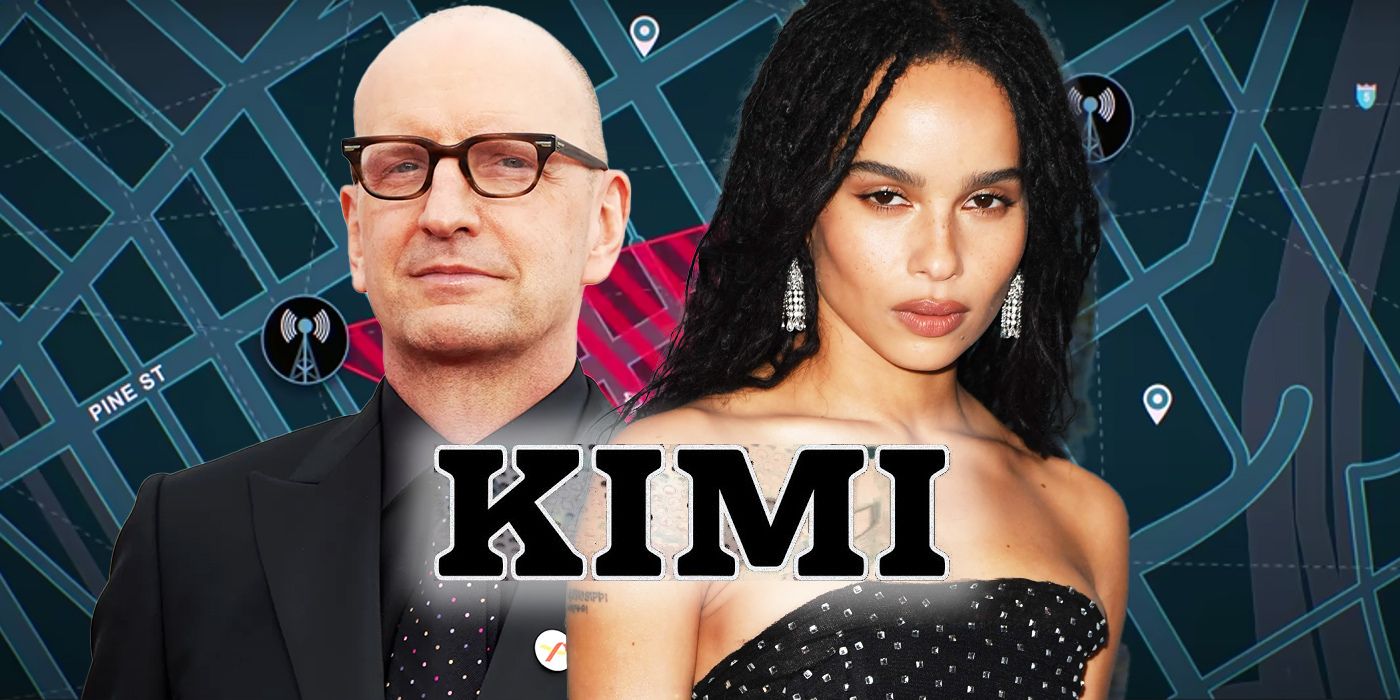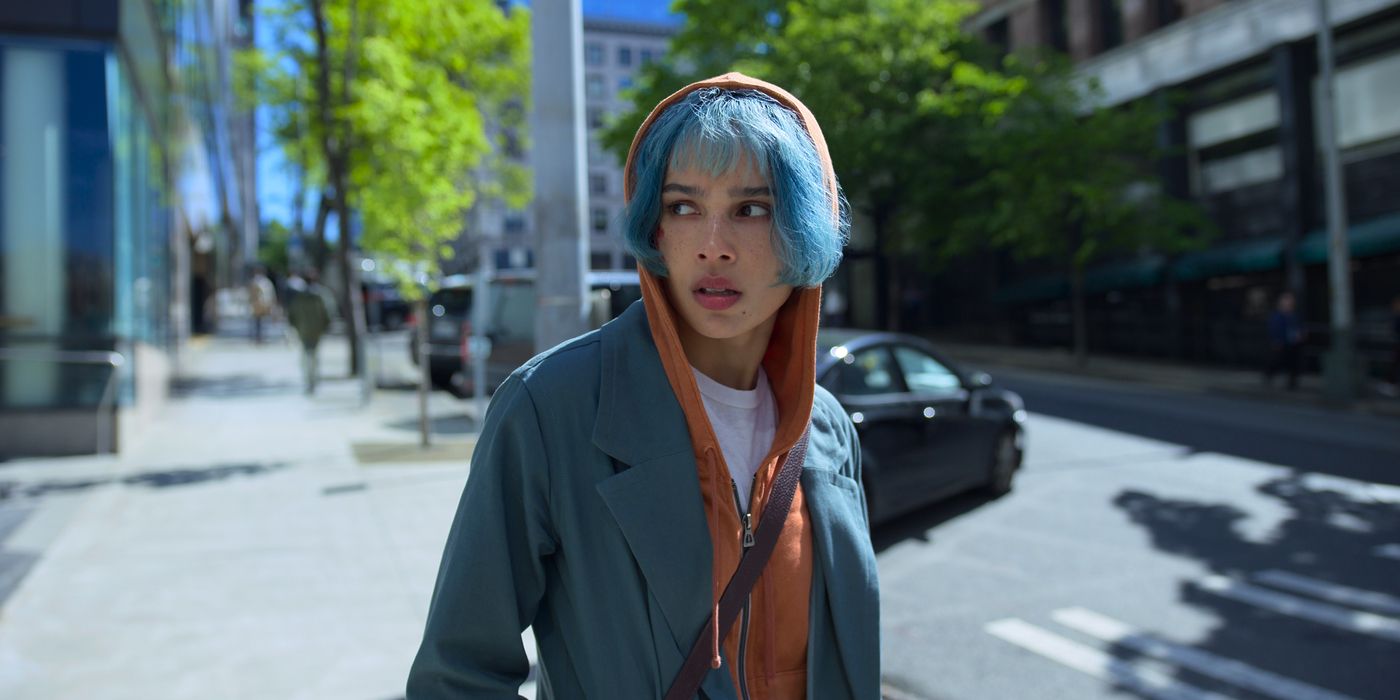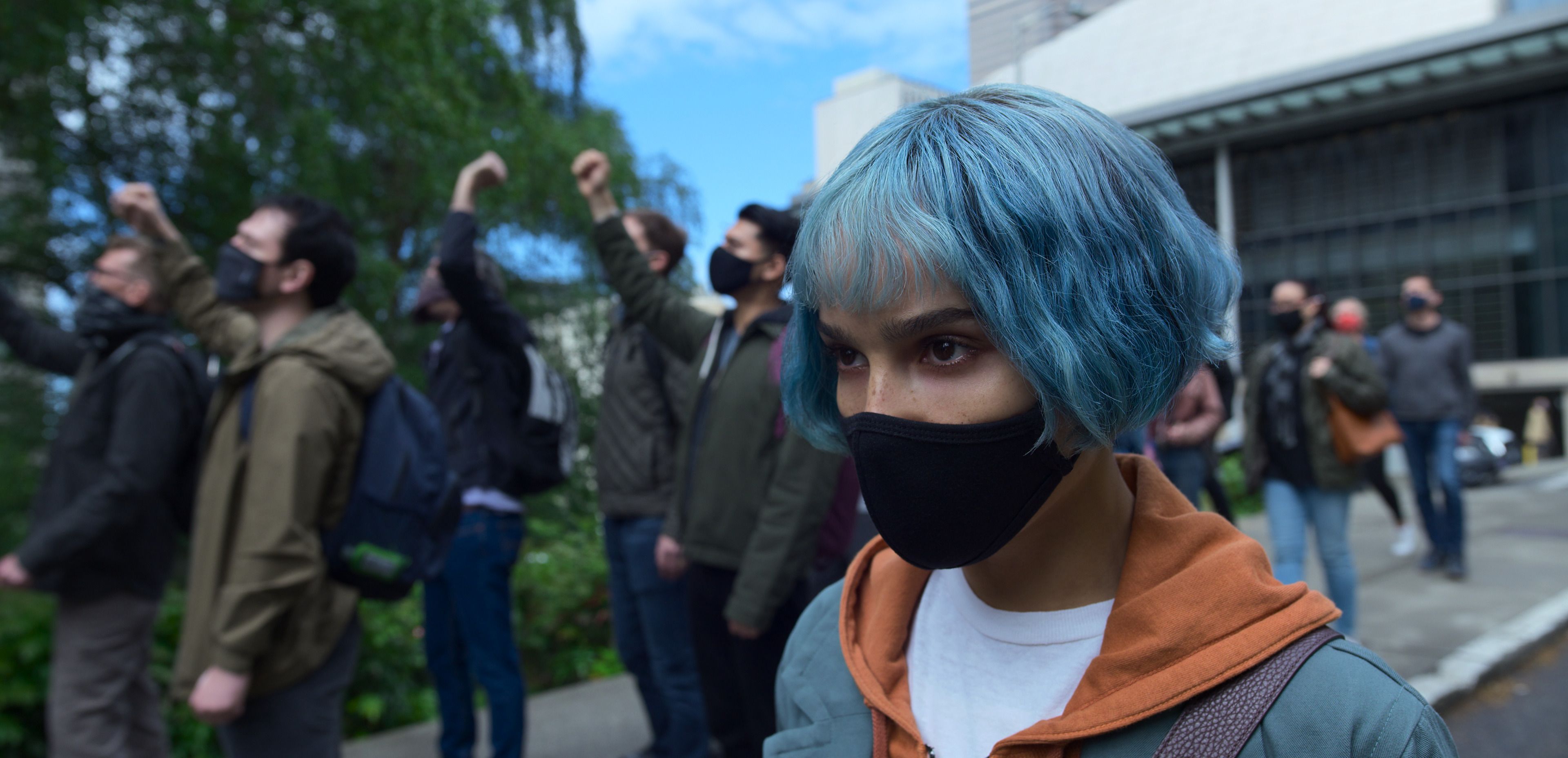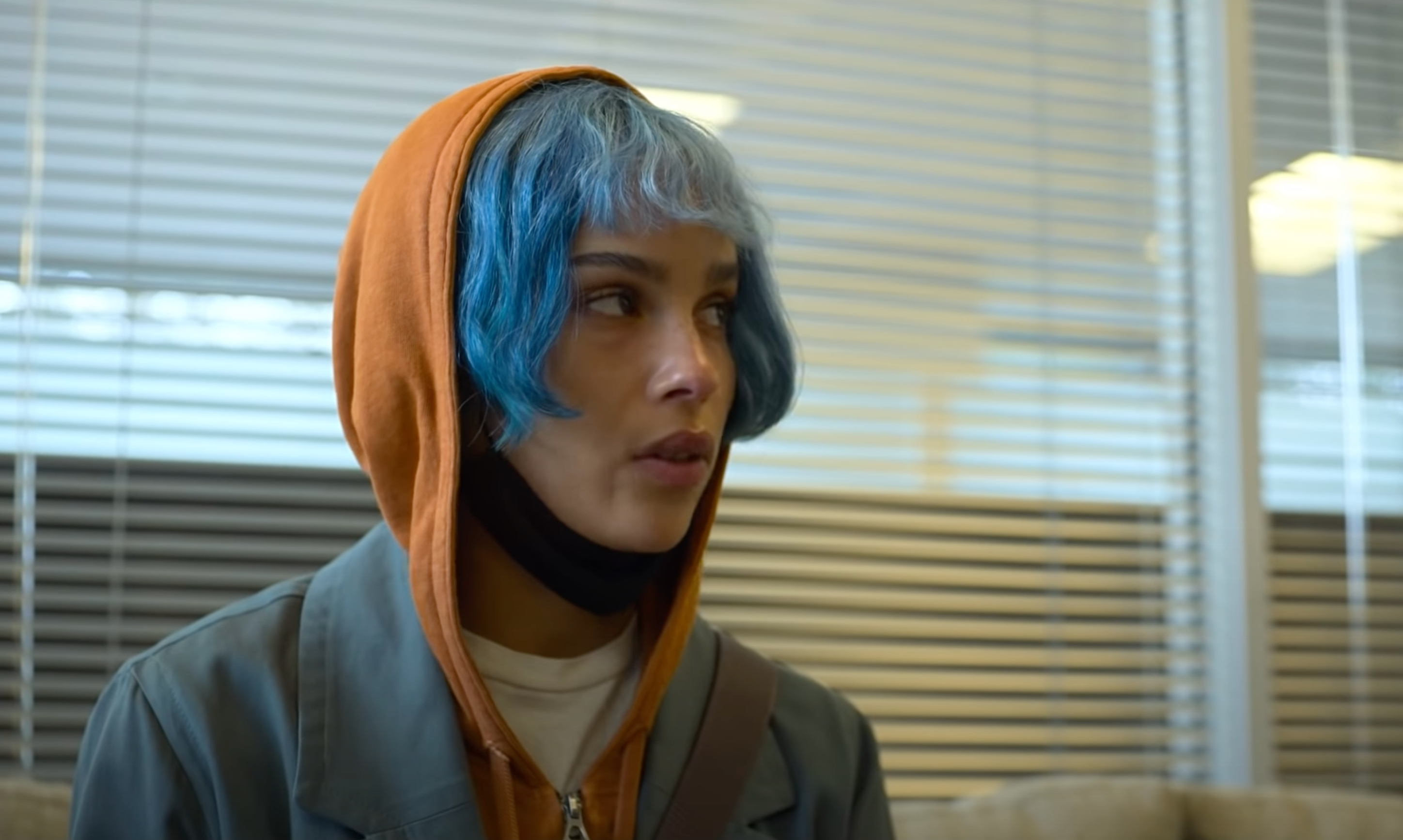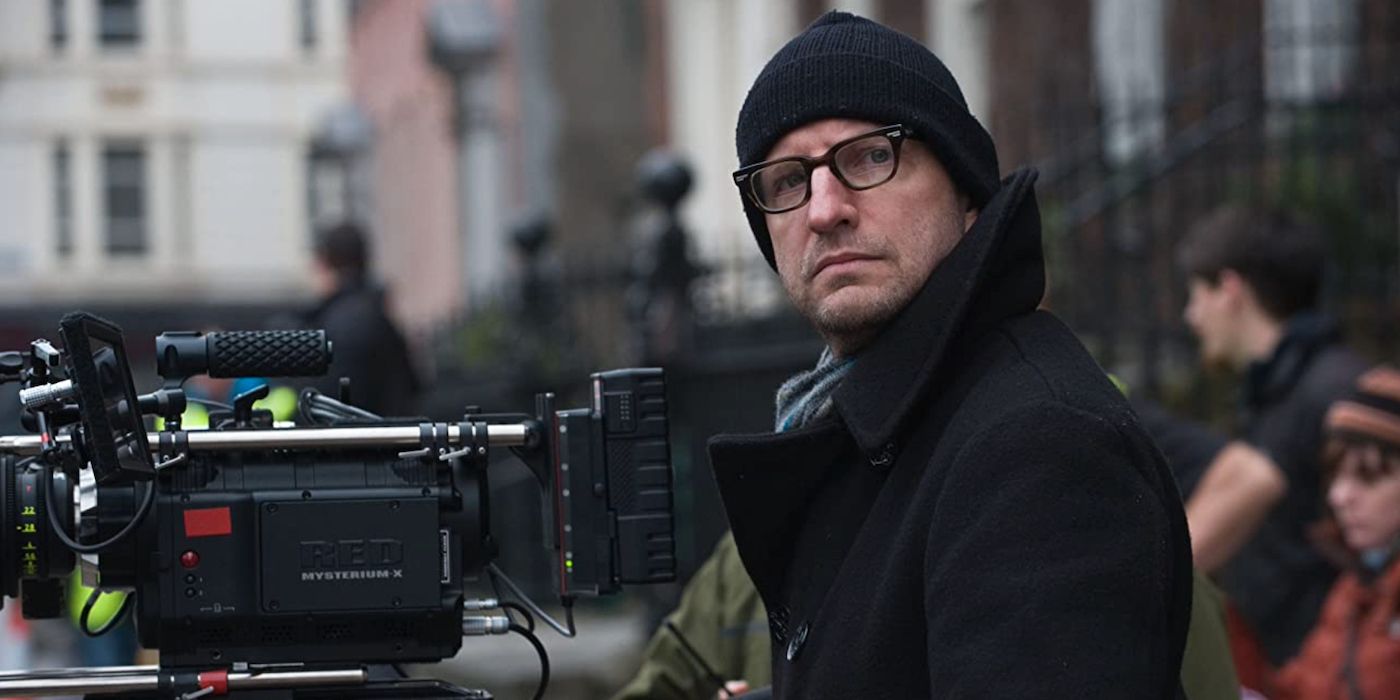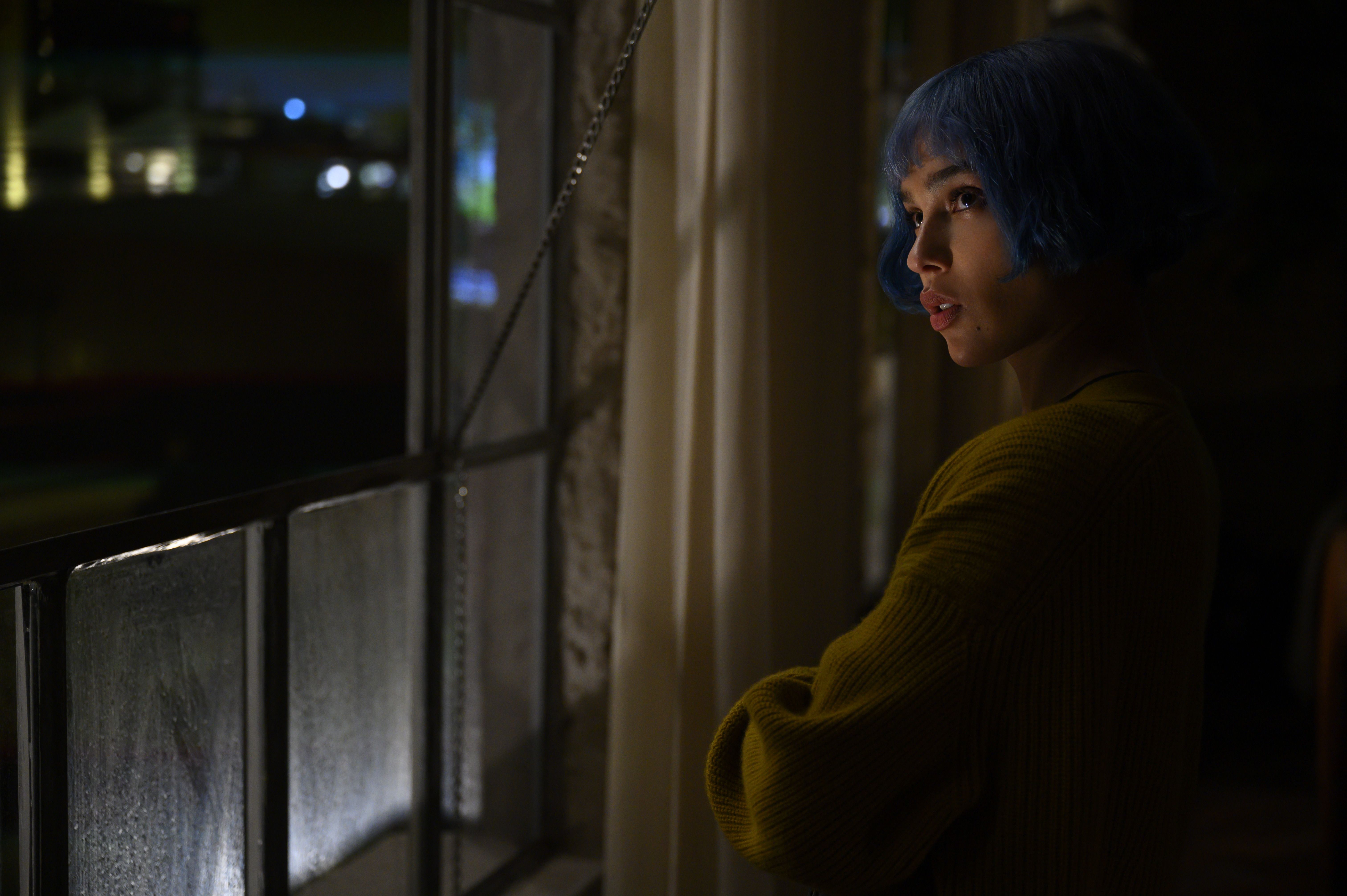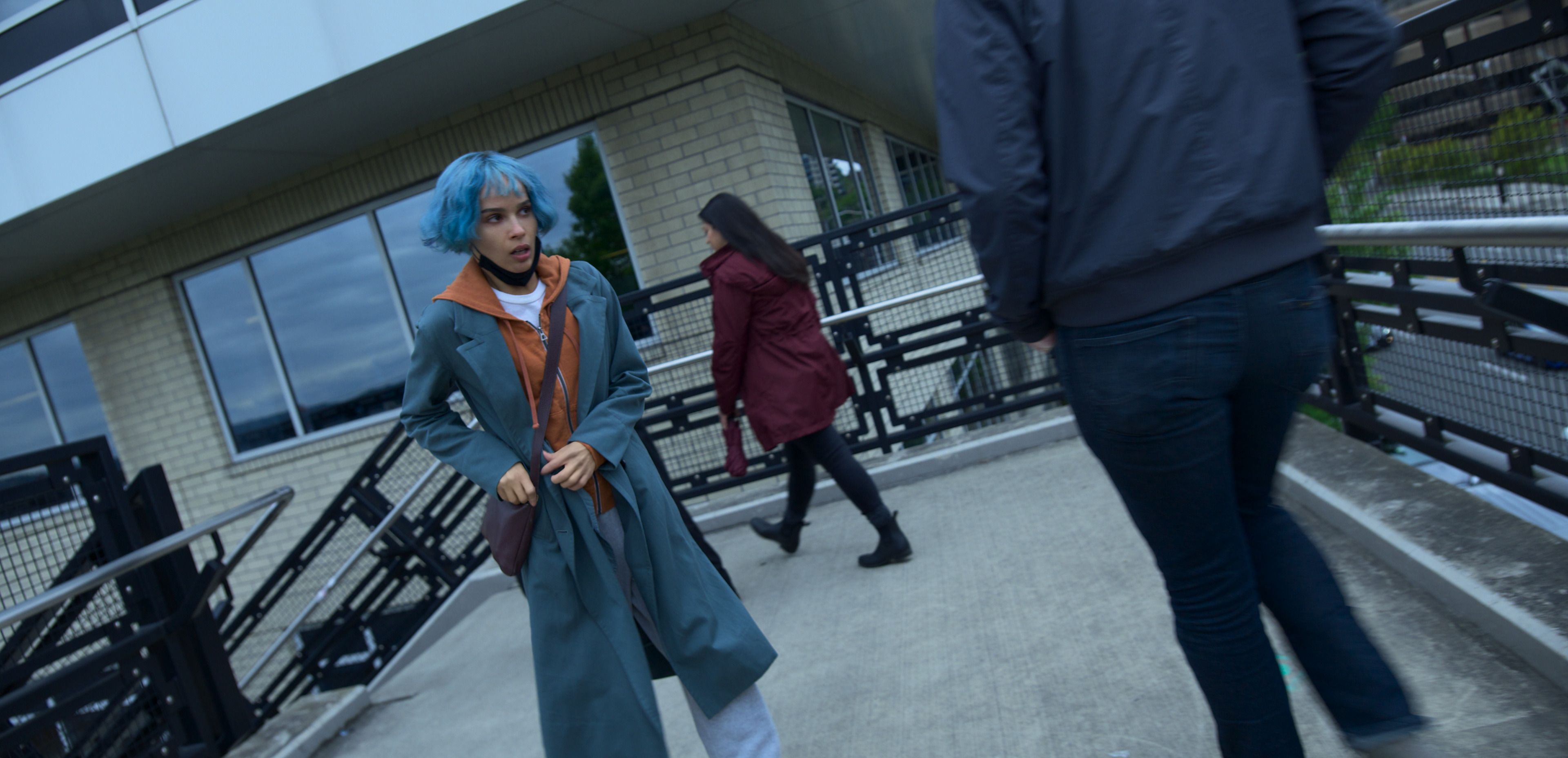KIMI is Steven Soderbergh's next thriller, and this time he's targeting some familiar fears. Zoë Kravitz plays Angela, as an agoraphobic tech worker at an Amazon-like company called Amygdala Corporation. She spends her days listening to audio recordings from Alexa-like devices called KIMI. Throughout her workday, she encounters a shocking recording of a potential crime. When she tries to report it, though, she encounters bureaucratic and nefarious obstacles that prevent justice from being meted out.
The film follows Angela as she pushes her own boundaries after a year of comfortably being locked down at home due to COVID, and watches as she moves past her fears to try and find someone to help the victim on the other side of the recording.
Collider got the opportunity to participate in a group interview with a few other reporters speaking with Soderbergh and Kravitz about their experiences working on this film. They talked about the creation of the film and its influences, Soderbergh talked about what drew him to Kravitz for his leading protagonist. Kravitz talked about what it was like to be at the top of the call sheet and what she learned from Nicole Kidman and Reese Witherspoon in that regard. Because the film revolves around technology and its pervasiveness, they also talked about that and Soderbergh divulged what it was like to enter the streaming market and to work with Warner Bros. Soderbergh also talked about his unique film editing style and about how Contagion could have been a very different story.
Question: Steven, what drew you to KIMI and working with David Koepp, who wrote the script and co-produced the film.
STEVEN SODERBERGH: I think anybody who pays attention to movies, and especially anybody who pays attention to thrillers would be inclined to say yes if David Koepp approached them and said, "Can I write a movie for you? I have this idea." So that was a 'Hell Yeah' for me. My biggest concern... because I knew David would come up with something based on the idea that was going to be fun. David and I have known each other since 1989, and we're good friends. And you don't really know someone until they direct a movie for you. I didn't know how it was gonna work in the practical sense, like once the script came in, how does David feel about notes? And Zoë will tell you, we're cutting as we're going, and we're recalibrating things with the story as we're shooting.
So often, I would be hitting David with things that were changes that I felt were better, and I had to hope that he would agree. One of my favorite things in the movie , the last interaction between Zoë and Devin [Ratray] and Byron [Bowers] at the door, was built on the set that day because we felt like we needed a button, like we need a landing. It doesn't have a landing. And we were trying to think about that. And Devin Ratray said, "She doesn't even know my name." And I said, "That's the solve." That's the solve and that's how we started what turned into that little sequence there. So, I didn't know like, is David gonna be down with that? He was totally cool, and we're still speaking.
There are some really strong Rear Window vibes to the film, Steven. You mentioned Hitchcock before, but what are some of the cinematic projects that influence the feel and tone of KIMI?
SODERBERGH: Beyond the obvious ones, like Rear Window and The Conversation and Blow-Up and Panic Room, there are little side pockets of things. Almost all the early Roman Polanski films deal with characters that are contained in spaces that they can't leave or are trapped in, whether it's Knife in the Water, or Repulsion, or Cul-de-sac. Rosemary's Baby takes place almost exclusively in her apartment, and I love that. So I was really watching those films on repeat, to tease out the kind of double helix of how the staging worked. And so there's a lot of there's a lot of that in there as well.
You've done Contagion before about pandemic era movies, how did that shape the way that you approached KIMI?
SODERBERGH: Well, we really didn't have a choice. It was one of these weird things, the premise that David pitched me was pre-COVID. And the story works without it, but it turns out to work even better with it, but we kind of inherited that without asking, and what I liked about it was, for most of us, the lockdown was a real psychological struggle. For Angela, [she] couldn't ask for a better excuse to not leave the house. Like she's one of the few people in that city that's totally fine with never leaving her apartment. So it turned out just to be this weird collision of the idea and the real world, and it enhanced it, fortunately. The tricky part was, how do we play for a movie that's going to come out in 10 months? How do we show the exterior world? How many people are wearing masks? How many people are not wearing masks? What does the world look like in 10 months? That was a tricky thing to come to an answer with.
Zoë, you've kind of got a one-woman show in KIMI. How did playing Angela stand out from some of your other roles in the past where you're working with more of a cast?
ZOË KRAVITZ: It was a really interesting challenge. I think it was a bit scary. We were saying earlier, there's nowhere to hide, and that can be really vulnerable. And not only is it daunting to carry a film but to try and make each scene different from the next is an interesting journey, and it comes down to really small things like blocking or the tone of your voice. There's this one scene where I'm on the phone, and we decided I'm pacing back and forth, and I'm doing this like weird toe tapping thing, but it was because I was really trying to think about like the little odd things you do when you're alone for a long time. And it can be so small, but you play games with yourself, or you find ways to just entertain yourself or to feel some kind of shift.
That was a fun thing to play with. And all the scenes with anyone else were on the computer basically, besides Byron, and we really shot them like they were on Zoom in the other studio. I didn't even meet some of the people that I had scenes with. So it felt like a science experiment of a film in some ways. I've never approached anything like that. It was really interesting.
Steven, can you talk about the decision to cast Zoë? What made you think that she would be perfect for the role of Angela?
SODERBERGH: I have always felt that Zoë Kravitz is a movie star. So, it was that was easy. I say that in the context of a movie star is a critical component of movies. There have always been movie stars. People attach to certain performers, and that's how movies exploded in the early part of the 20th Century. They got over the novelty of seeing a moving image pretty quickly, but what they attached to were characters and the people who played those characters. So they've been at the heart of movies since the very beginning.
It's a thing that I take seriously in the sense that when I got the job to direct Out of Sight, and I was the last man standing, like I had to wait for people to pass so that I could get this job. Some people didn't take the movie because they didn't think George was a movie star. And I absolutely knew George Clooney was a movie star. It wasn't even a question to me. So I think it's a combination of things that are just unique. And this story, Zoë's in...I was trying to calculate the other day... 94.8% of the frames in the movie have Zoë in it? So you need somebody who can shoulder that. And I don't know, Zoë, what's it like to be number one on the call sheet?
KRAVITZ: It's scary. This is only the second time that I've had this opportunity, [both] with High Fidelity and with this. I learned a lot from working on Big Little Lies with people like Nicole [Kidman] and Reese [Witherspoon]. I really think being number one on the call sheet... of course, when it comes to the storytelling, [it] is a big responsibility, but it's also a responsibility in terms of the energy on set and connecting with the crew and guiding the energy of the movie-making.
I think that's something I really saw with Reese and Nicole, knowing every crew member's name and engaging with them. it's a beautiful thing. So it's an adventure, and it's, again, very scary. But working with Steven – that's what's even scarier than being number one, is working with Steven Soderbergh. Because he's a legend, and he works so fast, and you really have to be prepared. We get a couple takes every time – it's intense.
SODERBERGH: But reasonable days!
KRAVITZ: Oh my – and done early! Again, done by lunch! It's crazy.
Zoë, what was one of your favorite scenes that you enjoyed filming? And why was it your favorite?
KRAVITZ: That's a good question. There's a scene in the kitchen that I really enjoyed mostly because it's one of my favorite moments in the movie, which is the Kombucha bottle. I don't know why, but it was just such a strange jump scare moment. I think that was the most takes I ever got on the movie, and it was because the placement of the bottle was so impossible to get. So yeah, that was a really funny challenge. It was like this entire movie, being number one, I have to carry this whole thing, the hardest moment is going to be putting this bottle down in the right way. So that was yeah, that was just a kind of funny, interesting moment.
And I really enjoyed the stuff in the van was really fun, too, with the protests and all that stuff. That was really fun. I kind of forgot that this is also an action film all of a sudden. So it went from sitting in a chair basically the entire movie to all of a sudden kicking someone in the face with an UGG boot and that was really fun.
Did your experience with the film change the way you interact with technology?
KRAVITZ: I've always been a bit wary of technology. I'm the person that has a Band-Aid over my computer camera and I don't use Siri, I don't have an Alexa or that stuff. It freaks me out. It genuinely freaks me out. And they're already listening. I know that they're listening. I have moments where I'll mention something, and then I get an ad for it. I noticed all that stuff, and it freaks me out. Which is why I think I also was so intrigued by the story because we really are living in this Big Brother age, and it's become so normal.
It's kind of like Jaws in the water too, right? Like, if you can turn something that we all know and love and experience into something scary. I think those are the scariest kinds of thrillers. That's why Contagion is so scary. It can happen to any of us. We're not on the planet Mars or there's no zombie apocalypse. This is a very real-world thing. And I think that's why it's so unsettling.
Steven, emerging technology has played such a big role in a lot of your recent projects. And now we've got KIMI, which is headed to streaming. So I'm really curious like what are your thoughts on the relationship between entertainment, TV, and technology?
SODERBERGH: So I think it depends on what matters to you. What I've enjoyed over the last 15 years is that the emerging technology has allowed me to optimize my process in a way that was just not possible before. We have digital capability in all directions all the time. It aligned perfectly for the things that matter to me about the process and the result. It's clearly rewired the entire industry in terms of the economic paradigm. We've moved from a space in which you made a thing, that costs this, and you put it out in the world, and it returned that. It was very clean, and we're not in that world anymore.
In the subscription world, the relationship between what you made, and what it cost, and how to quantify that is shifting constantly. You know what I mean? The cost of an eyeball is increasing every day. So how do you factor in the fact that x number of people have watched it, but it's taken up this much cultural real estate? Like people are talking about it in a way that's disproportionate to the number of people that are watching it, and how do you quantify that? Do you do that again? The question that I asked Warner Bros – because they won't give me any data, they won't give anybody any data – is, "Are you happy with the result of this? Would you do it again? Would you make that same thing again?" Just tell me yes or no, so I can calibrate what space I want to navigate.
Zoë, I'm curious about your character's hesitancy to venture outside. It mirrors what a lot of people are experiencing right now. Did you feel like art was imitating life in this? How did the current state of things shape your performance?
KRAVITZ: Yeah, absolutely. I think I was able to relate to Angela in a way that had this script come across my path a couple of years ago, I would have had to use a lot more imagination. But I had just spent the last six months – basically, I was working, but because I was working I was even more strict about leaving the house when I was shooting The Batman. So I had really been alone with a computer in my house for many months. And like all of us, it made me weird. I got weird. So it was a really interesting thing to explore, even more so because of the unfortunate state of the world.
We know that you, Steven, edit as you shoot. How much of the film was shaped during the edit assembly process? And were there any additional explorations into Angela's attack that made her shut in?
SODERBERGH: Yes, well, as I said, we're continually kind of stress testing the ideas as we execute them, and we were able to shoot largely in sequence. Not as much as would be ideal, but we were able to shoot in sequence enough that we could make course corrections and I could fix things that I wanted to fix pretty quickly. So it was, I guess, two to three days a week. The first thing up in the morning would be a redo of a specific shot from the day before that I just thought wasn't good enough, or that we could do in a different way, or I wasn't good enough.
And then, after, we were never any more explicit than is in the film now about what happened to Angela. It's all implied, and it was always that way. When we finished shooting, I was screening the movie for friends and family and the questions that were coming up, I felt were important to be answered. But the way that we found to answer them was, the first scene in the film with Derek DelGaudio at home with his family was something that I shot in after I'd seen the whole film put together. Because I felt like we need to know what world Angela occupies, and we need to understand her job very, very clearly. Or you're watching the movie with all these questions instead of paying attention to what's happening. And so that was the biggest redo that we ended up doing. And it was a couple of months after the shoot.
Zoë, is there anything that you learned from working with Steven with regard to directing?
KRAVITZ: Yeah, literally, it was like a masterclass. I've never seen anyone work like this before. And because he's so involved, because he's camera operating, it's a really different beast. I was picking his brain a lot about directing because I'm getting ready to do that myself. Some people storyboard and things like that. He has every shot in his mind. My favorite moment on set with Steven is after you shoot something, and the entire crew just looks at Steven and waits to hear what we're going to do next. And he just walks around the room and looks at different places. And then he goes, "I want to be here," and it's watching him actively find each shot of the film.
He's editing the film in his mind as he goes because he also edits the film, so it's incredible. I feel like in terms of efficiency, editing as you go, in your mind, is huge and saves so much time. He doesn't waste time just getting coverage he's not going to use for no reason. That's really an efficient way of filmmaking. I hope to one day be able to think that way and to visualize so clearly what I'm attempting to make in my mind.
Steven, I'm wondering out of all of your films, which one changed the most in the editing room and why?
SODERBERGH: It's kind of a tie but for different reasons. The Limey was written and shot to be constructed in chronological order. In post-production, it was completely thrown into a Cuisinart, and we started from scratch and turned it into what you see now, which necessitated a couple of days of shooting to make that new approach work.
The other one, ironically, was Contagion. The first cuts of Contagion were coming in at like 2 hours and 20 to 25. And it wasn't working. A friend of mine suggested an experiment. He said, 'Why don't you just do a 90-minute cut?' Just, if somebody put a gun to your head and said make this movie 90 minutes long, what would survive? Do that as an exercise, and I did that. It didn't take very long, and I looked at it and a structure emerged that worked. But in order to fill in — I cut 40 minutes of edited material out. Whole plot lines, gone. And to make that new structure work, we had to do a week of shooting to get these interstitial scenes to connect these big blocks. Scott [Z. Burns] did it beautifully. It's completely seamless. But that was a radical overhaul of the film.

